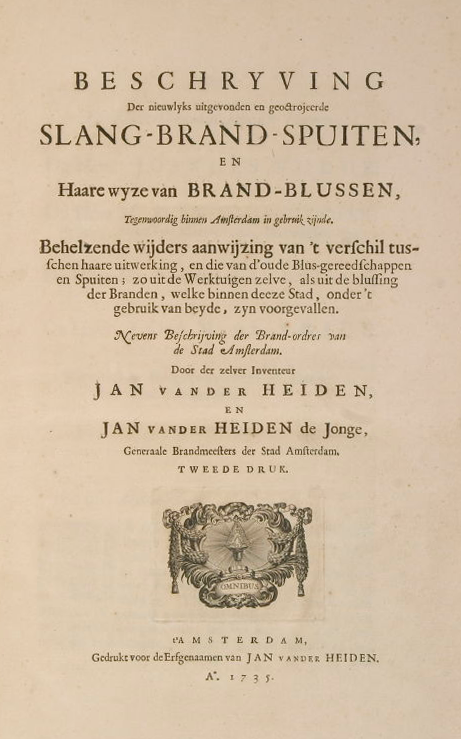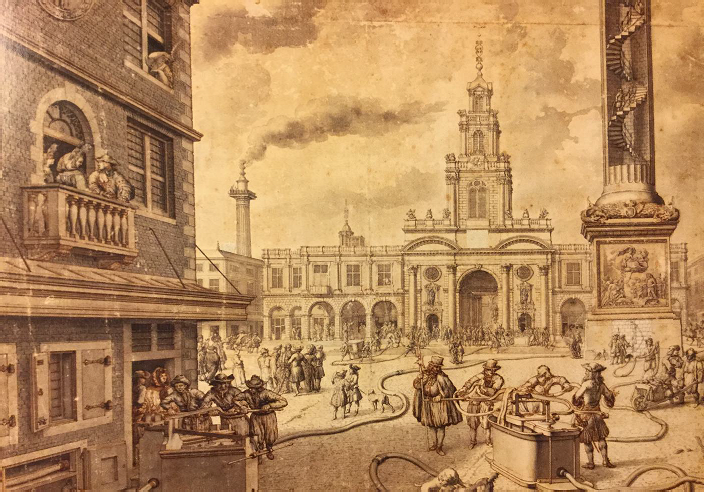Appendix #10: Van der Heyden - New vs. Old Engine Techniques

Illustration 10: Van der Heyden - New vs. Old Engine Techniques
Fig 1. Van der Heyden’s detailed drawing here illustrates firefighting methods used in Amsterdam in the 1670s. The most dramatic difference from firefighting as practiced in the American colonies is the use of hose. Firefighters are attacking the fire in every floor of the building using hoses connected to engines on the ground. Amsterdam still used the “older” engines with nozzles attached directly to the top of the engines as seen in the lower left-hand corner (z). But the future of effective fire-fighting in the Netherlands, as van der Heyden was advocating, were engines with high pressure hoses attached to the engine and taken close to the source of the fire. The engine in the lower right labeled F provides water for hoses battling the F fires.
Reference: Plate 2 in Jan van der Heyden, DESCRIPTIONS of newly invented and patented SNAKE-FIRE SPRAYERS and HARE-FIRE EXTINGUISHERS, currently in use in Amsterdam (Amsterdam: Jan Rieuwertsz, 1690) [Google Translation of original frontispiece below.] Also (Amsterdam: Heirs of Jan van der Heyden, 1735, 2nd edition).

Fig 2. Exceptional English translation and reproduction of this work is in: Leslie Stibbe Multhauf, Van Der Heyden: A Description of Fire Engines with Water Hoses and the Method of Fighting Fires now used in Amsterdam (Canton, MA: Science History Publications, 1996)

Fig 3. Demonstration of van der Heyden engines in the large square in front of the London Stock Exchange circa 1697. These engines could have easily influenced Newham’s designs especially in their ability to get water by suction. Koninklijk Oudheidkundig Genootschap, Amsterdam, Port. 22
